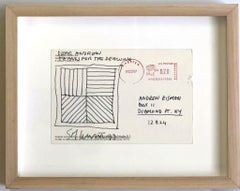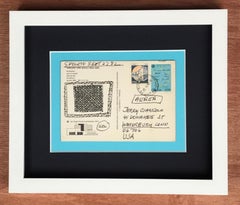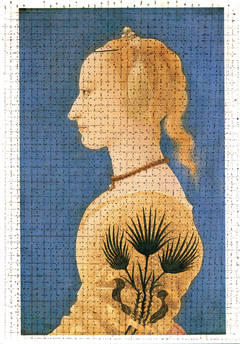Sol Lewitt Postcard
1990s Minimalist Abstract Drawings and Watercolors
Postcard, Felt Pen
1980s Abstract Geometric Abstract Drawings and Watercolors
Ink, Postcard, Mixed Media, Offset
Early 2000s Minimalist Abstract Drawings and Watercolors
Postcard, Felt Pen
Recent Sales
20th Century Abstract Mixed Media
Mixed Media
Sol LeWitt for sale on 1stDibs
While New York City’s art scene in the 1950s and ’60s revolved around Abstract Expressionism, multidisciplinary artist Sol LeWitt paved an alternative path, creating a prolific output of work in the genres of minimalism and, later, Conceptual art.
While LeWitt is perhaps best known for his immense “wall drawings,” he created work in a wide range of media, including drawing, painting, printmaking and sculpture. (However, in a characteristic rebuttal of canonical art history, he referred to these pieces as “structures.”) He also produced several texts, including the seminal Sentences on Conceptual Art (1969).
Born in Hartford, Connecticut, in 1928, LeWitt received a BFA from Syracuse University before going to work as a graphic designer for the renowned architect I.M. Pei. He would later work at the book counter at the Museum of Modern Art, where his colleagues included fellow artists. LeWitt’s early exposure to architecture may well have had outsize influence on his subsequent career: He was known for the geometric nature of his work, specifically his fastidious, near-obsessive treatment of the cube, which he rendered repeatedly in various ways throughout his paintings, structures and wall drawings.
In the 1960s, LeWitt showed in several group exhibitions throughout New York and also began to experiment with three-dimensional structures, most modular riffs on the cube shape. His work was included in “Working Drawings and Other Visible Things on Paper Not Necessarily Meant to Be Viewed as Art,” curated by Mel Bochner, another leading exponent of Conceptualism.
Later, LeWitt debuted his now-iconic wall drawings, creating work directly on the walls of galleries and show spaces, beginning with pioneering gallerist Paula Cooper’s inaugural show in 1968. The wall drawings became a prime example of LeWitt’s philosophical approach to art, with their installation often carried out by museum staff or curators following precise instructions from the artist.
“The idea,” the artist once said, “becomes a machine that makes the art.” LeWitt continued to produce work until his death in 2007.
Find a collection of original Sol LeWitt art on 1stDibs.



